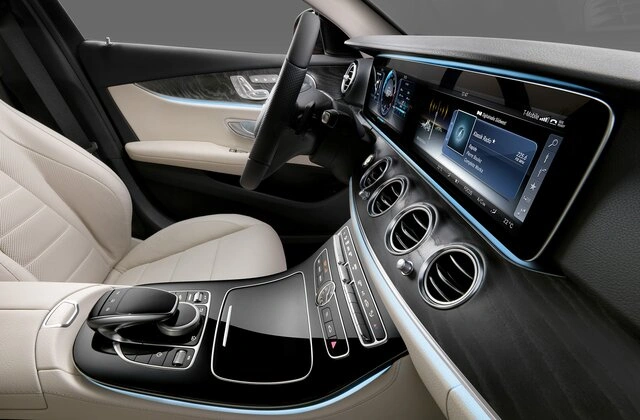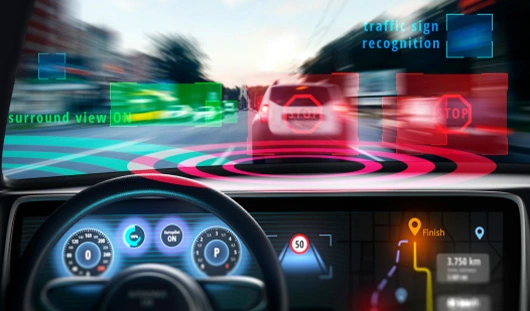Road safety has been a top priority for automakers and technology developers for decades. With advancements in artificial intelligence, automation, and smart sensors, modern vehicles are becoming safer than ever. Today’s cars are equipped with cutting-edge safety features designed to prevent accidents, protect passengers, and improve overall driving experiences. In this article, we will explore the latest car safety technologies that are revolutionizing road safety.
The Evolution of Car Safety Features
Automobile safety has evolved significantly over the years. From the introduction of seat belts and airbags to anti-lock braking systems (ABS) and traction control, car manufacturers have continuously improved vehicle safety.
However, recent technological advancements have taken safety to an entirely new level. Modern vehicles now include driver-assist systems, autonomous emergency braking, AI-driven monitoring, and vehicle-to-vehicle communication, making roads safer for everyone.
Top Cutting-Edge Car Safety Features

1. Advanced Driver Assistance Systems (ADAS)
ADAS consists of smart technologies that assist drivers in preventing accidents and improving control over their vehicles. Some of the key ADAS features include:
- Lane Departure Warning (LDW) & Lane Keeping Assist (LKA): Alerts drivers if the car unintentionally drifts out of its lane and can automatically steer it back.
- Blind Spot Monitoring (BSM): Uses sensors to warn drivers of vehicles in their blind spots.
- Adaptive Cruise Control (ACC): Automatically adjusts the vehicle’s speed to maintain a safe following distance.
- Traffic Sign Recognition (TSR): Identifies speed limits, stop signs, and other road signs to assist the driver.
2. Autonomous Emergency Braking (AEB)
AEB is a game-changing safety feature that automatically applies the brakes if a potential collision is detected. This system can help prevent rear-end crashes and pedestrian accidents, significantly reducing the risk of fatal injuries.
- Example: Tesla, Volvo, and Mercedes-Benz integrate AEB systems that work in both low and high-speed conditions to ensure safety.
3. Artificial Intelligence (AI) and Driver Monitoring Systems
AI-driven safety features are becoming a standard in new cars, providing real-time analysis of driving behavior. Driver Monitoring Systems (DMS) use AI to detect signs of drowsiness, distraction, or impaired driving, alerting the driver or even taking corrective action.
- Example: Subaru’s EyeSight technology monitors the driver’s eye movements and provides alerts if signs of fatigue or distraction are detected.
4. Vehicle-to-Everything (V2X) Communication
V2X technology enables vehicles to communicate with other vehicles (V2V), infrastructure (V2I), and pedestrians (V2P). This innovation allows cars to share data about road conditions, upcoming hazards, and traffic congestion, improving overall safety and efficiency.
- Example: Audi’s V2I system communicates with traffic lights to optimize driving speeds and reduce the chances of running red lights.
5. 360-Degree Cameras and Parking Assist Systems
Parking and maneuvering in tight spaces can be challenging, but 360-degree camera systems and automatic parking assist make it easier and safer. These features help drivers avoid obstacles and reduce the risk of collisions in crowded parking areas.
- Example: BMW’s Surround View system provides a bird’s-eye view of the vehicle, assisting drivers in navigating tight spots effortlessly.
6. Pedestrian and Cyclist Detection Systems
With cities becoming more crowded, pedestrian and cyclist safety is a growing concern. New cars now come with AI-powered detection systems that identify pedestrians, cyclists, and obstacles, automatically applying brakes if necessary.
- Example: Volvo’s City Safety system can detect pedestrians and cyclists, preventing potential accidents in urban environments.
Benefits of Advanced Safety Features

1. Reduction in Traffic Accidents
Studies have shown that vehicles equipped with advanced safety systems significantly reduce accident rates by minimizing human error.
2. Lower Insurance Costs
Many insurance companies offer discounts on policies for vehicles with advanced safety features, as they decrease the likelihood of accidents.
3. Enhanced Protection for Passengers and Road Users
Modern safety systems ensure better protection for passengers, pedestrians, and cyclists, making roads safer for everyone.
4. Increased Driver Confidence
Knowing that a car is equipped with state-of-the-art safety technology gives drivers greater confidence and peace of mind on the road.
Challenges and Future Developments
While modern safety features have significantly improved road safety, there are some challenges that need to be addressed:
- Cost: Advanced safety technology increases vehicle prices, making it less accessible to all consumers.
- Data Privacy Concerns: AI-powered monitoring systems collect and analyze data, raising concerns about driver privacy and data security.
- Reliability of Autonomous Systems: While self-driving technologies are advancing, there are still challenges in ensuring 100% accuracy in detecting obstacles and making split-second decisions.
Despite these challenges, the future of road safety is promising. As AI, automation, and connectivity continue to evolve, we can expect even more innovative safety features that will make driving safer for everyone.
Final Thoughts
The automotive industry is making tremendous strides in revolutionizing road safety through cutting-edge technologies. From ADAS and AI-powered monitoring to V2X communication and autonomous braking, modern cars are smarter, safer, and more reliable than ever before.
As we move forward, further advancements in self-driving technology, machine learning, and predictive analytics will continue to reshape road safety standards. Whether you’re purchasing a new car or upgrading your current one, investing in a vehicle with advanced safety features is a step toward a safer future for all road users.
Are you ready for the next generation of safer, smarter driving?


